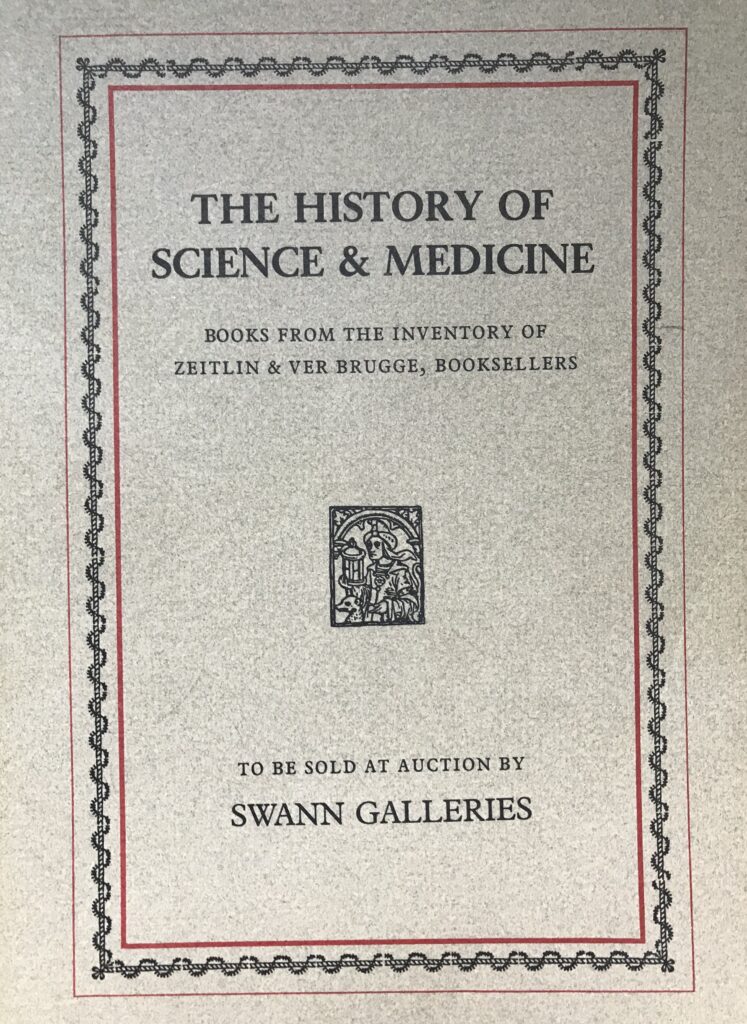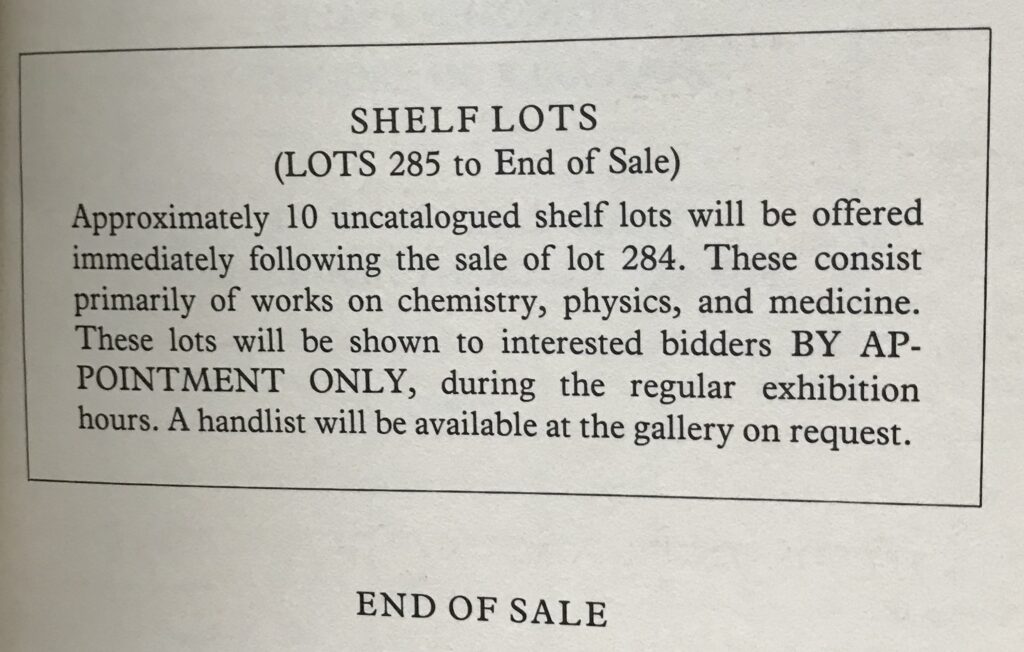This is Part 3 of a research exploration by Cataloger Vance Woods and History of Science and Rare Books Librarian Anne Bahde. Part 1; Part 2.

We were heartened by Professor Bruce Moran’s response to our inquiries, though they had introduced new questions. We sent scans of the rest of the pamphlet to Moran, and told him of our discovery of the title in this index, to see if he could shed any further light. He replied:
“I can affirm that this is a preface to a work that is focused on the Disputatio de auro potabili of Thomas Erastus. Libavius admits that the man (Erastus) is dead [Erastus died in 1583], but that what he wrote is still alive; and he points out that Erastus, in his book, has brought together nearly all the arguments that “we recollect he wrote and said against our opinions/ views.” So, this is very much a counter-thrust, but without seeing the text itself there is no way of knowing what kinds of arguments Libavius has in mind. The main thing is, you have here only the preface to the work itself. I looked at the library in Jena to see what it has. That copy also has only the preface. So, it too is not complete and has no text beyond what you have. The interesting thing is that the preface refers to the Disputatio as having been edited fourteen years before. We know that the book appeared in 1578, so that would make the composition of the Libavius text, if not its publication, 1592. I have no idea where the date 1596 in the index comes from. The Jena copy has no date. Perhaps the text went to print later. But since both you and Jena have copies that have no date and only include the preface (and nothing else), perhaps the text was never published (for one reason or another) and all that remains are a few copies of the preface itself.”
Professor Moran’s interpretation provided some fascinating answers, but yet again we had more questions than we began with. We knew now that the item was likely meant to be used in an educational context, and was intended to be presented in direct juxtaposition to Erastus’ work on Paracelsus and the ingestion of gold. But we also knew that what we held was only a fragment of what was intended to be part of a larger product; because it had been potentially separated from its original context, we could not fully appreciate how it was intended to be used and understood.
We puzzled further over the item’s provenance and began tracing its potential movements from the date of its publication through various owners, and ultimately to SCARC’s backlog. A review of acquisition records confirmed that we lacked clear documentation about how or when it was acquired by OSU.
We began this research from the ownership mark we did have, the bookplate from pharmacologist Emil Starkenstein. Starkenstein was one of the most important figures in European pharmacology in the 20th century. He published prolifically on a wide range of topics in the field and held respected teaching positions. He had a passion for book collecting early in his career, and he built an unrivaled pharmacological collection.
We quickly found other evidence of other treasures he collected. The Morgan Library holds a 14th century manuscript herbal from his library, and a census of the rare Fabrica of Vesalius indicates a copy with his bookplate. The bookplate in his rare Libavius piece was one of at least four lovely plates Starkenstein used to mark his books.
But this brilliant life was among the six million murdered by Nazis in the Holocaust. According to an oral history from rare book dealer Ludwig Gottschalk cited in Starkenstein’s Wikipedia entry, Starkenstein’s family agreed to sell the collection to him before Starkenstein was sent to Mauthausen in 1942. But “when Gottschalk faced deportation to the camps himself, he secreted the library in several locations in the Black Forest and went into hiding. After the war, he reassembled the Starkenstein books and for nearly half a century sold items from the collection under the name Biblion, Inc., in Forest Hills, New York.”
Our pamphlet likely laid hidden in the forest with the rest of Starkenstein’s collection during the war. This heartbreaking report urged us to consider the awful decisions Starkenstein, his family, and Gottschalk had faced as they were persecuted for their faith. Making the decision to part with a lovingly acquired, splendid collection must have been achingly sad; perhaps that sadness was only outweighed by the immense fear Starkenstein must have felt for himself and his family.
Gottschalk selected those hiding spots for the precious books hoping to live through the war and come back for them. As keys to his potential economic survival after the war, he must have hoped desperately that they would still be there. What had seemed at first an unassuming pamphlet now stood to us as a potent symbol of the profound losses of the Holocaust.
As far we as could tell from other compiled provenance data for our collections, we held no other books with Starkenstein’s bookplate. As we reviewed internal historical acquisitions files, Anne found a typed dealer description for our item. Though no dealer was listed on the page, the format and style matched many other items in our collection with dealer descriptions from the well-known Los Angeles book dealer Zeitlin & Ver Brugge.
It is unknown how the pamphlet moved from Gottschalk’s Biblion to Zeitlin & Ver Brugge, but we began to look closer at how it may have moved from Zeitlin & Ver Brugge to OSU.




Upon Jake Zeitlin’s death, his stock went to Swann Galleries to be sold. This sale took place in two parts in 1988. We were able to consult a copy of the catalog for Part 1, and asked a library holding the catalog for Part 2 (University of Washington Special Collections) to consult their copy, which they graciously did despite having very limited access to collections during COVID.
The Libavius title is not listed in the catalogs to either Part 1 or Part 2 of this sale, but could have appeared in one of the “10 uncataloged shelf lots” listed at the end of Part 1, which consisted “primarily of works in chemistry, physics, and medicine.” OSU’s Special Collections department was founded in 1986, and librarians at the time were building history of science book collections through bulk purchase.
While we don’t have direct evidence of an OSU purchase, we do have indirect evidence that an OSU special collections librarian was at the Part 1 sale in April 1988, in the form of an unrelated piece of correspondence from that time. It is likely that this item was purchased at the Swann sale to add to our growing history of science collections. (If this is true, the item has stumped catalogers and lingered in our backlog for over thirty years!)

In Part 4, we will reflect on what we have discovered and the research skills helping us arrive at these answers.

